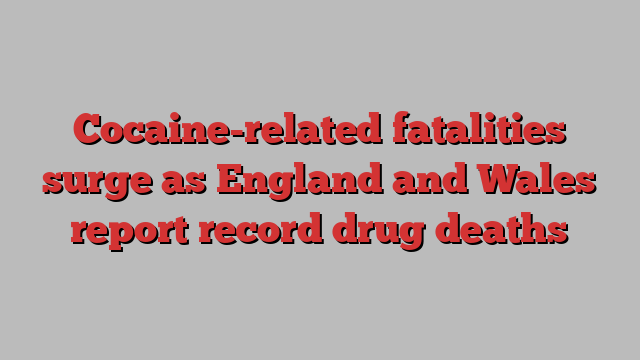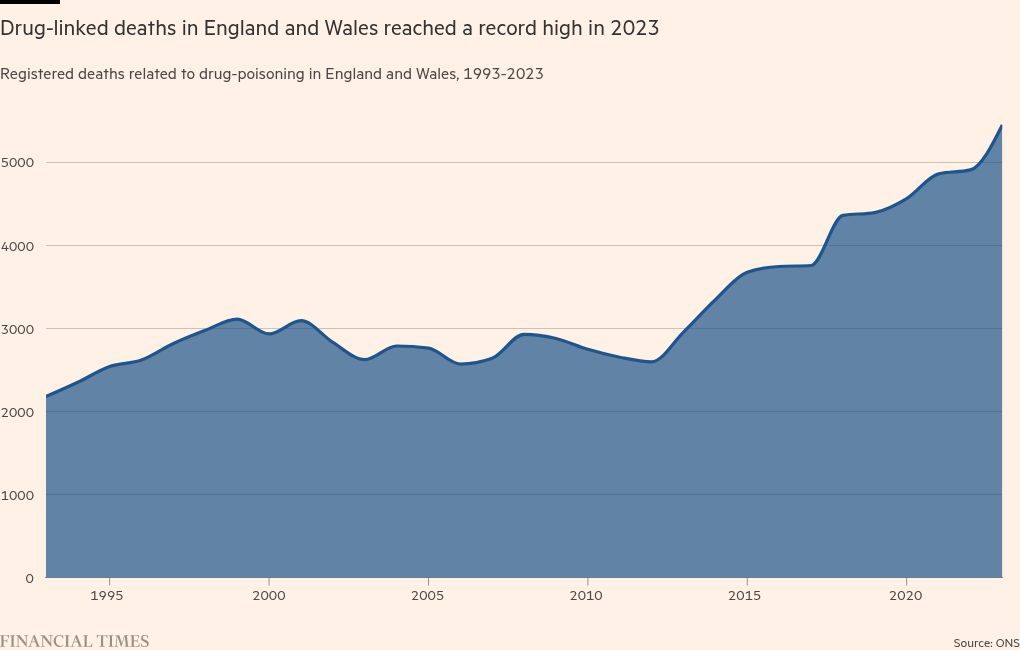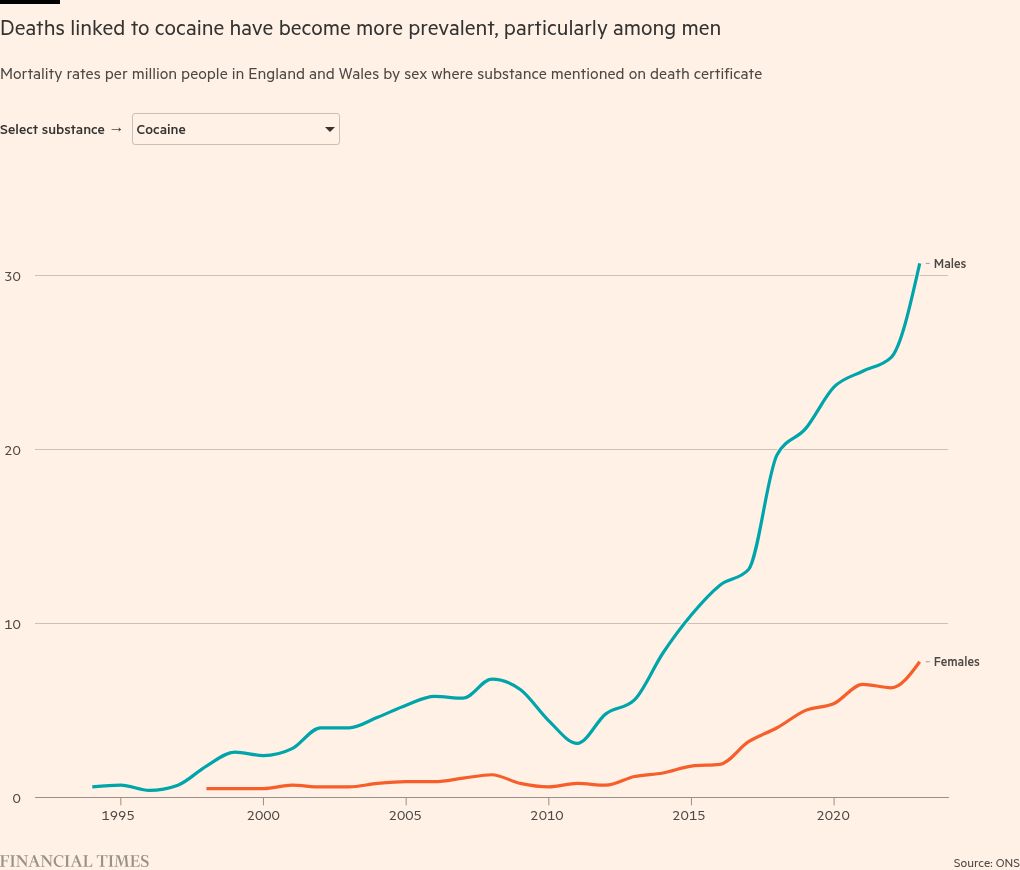
Unlock the Editor’s Digest for free
Roula Khalaf, Editor of the FT, selects her favourite stories in this weekly newsletter.
Falling cocaine prices have led to a surge in fatalities that have driven the number of drug-related deaths in England and Wales to the highest level on record.
Fatalities in England and Wales where drugs were mentioned on the death certificate increased by 11 per cent in 2023 to 5,448, according to the Office for National Statistics, with almost half of deaths involving an opiate such as heroin or morphine.
Deaths involving cocaine increased by 30.5 per cent to 1,118, the highest on record and the 12th straight year of rising fatalities. Men accounted for almost 80 per cent of fatalities where cocaine was mentioned on the death certificate. Cocaine is the second most-used illegal narcotic in England and Wales after cannabis.
“Men born in the 1970s, often referred to as ‘Generation X’, continue to see the highest rate of drug-related deaths,” said Greg Ceely, head of population health monitoring at the ONS.

The North East had the highest rate of drug-poisoning deaths among all English regions for the 11th year running, with 174.3 deaths per million of the population last year, which is three times higher than the lowest rate registered in London.
Robin Pollard, head of policy at WithYou, a drug use support charity, said one reason for the rise in cocaine use was falling prices. “Before 2020, we typically would have seen the price of a gramme of cocaine being around £100, [but] it is much more common to hear it being available for £60 a gramme or less now, and available to buy in ever smaller amounts,” he said.
Pollard added that it had become easier to purchase in all parts of the country and had become “increasingly” socially acceptable.

Martin Powell, head of campaigns at Transform, the drug policy foundation, believes the increase in cocaine use has in part been driven by the sharp rise in the purity of the drug, following the government’s clamp down on the use of cutting agents, such as benzocaine.
“This was done with the aim of reducing organised crime group profits by making it harder for them to dilute their product presale,” he said. “Instead, predictably, it just drove up purity and made cocaine use more appealing.”
He added that men tended to take drugs more often and in larger quantities than women, for a “complex mix” of cultural, social and mental health reasons.
“Excessive drug use is often a form of self-medication, and perhaps more men do not ask for or get the support they need in other ways than women do,” he said.
The ONS noted that more than half of all drug-poisoning deaths involve more than one drug, and it is not possible in those cases to tell which substance was primarily responsible for the death.
Vicki Markiewicz, executive director of charity Change Grow Live, warned that “synthetic drugs are finding their way into the cocaine market, so people might be taking what they think is cocaine, but actually it’s a very potent synthetic opiate that can have a catastrophic effect”.